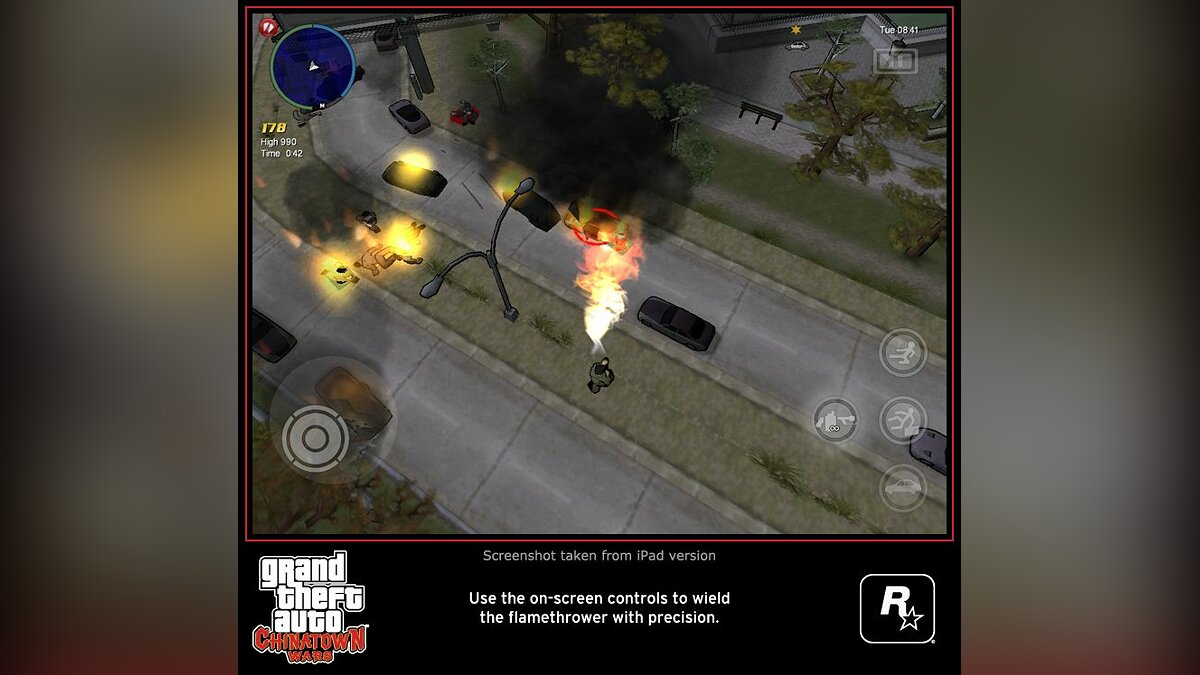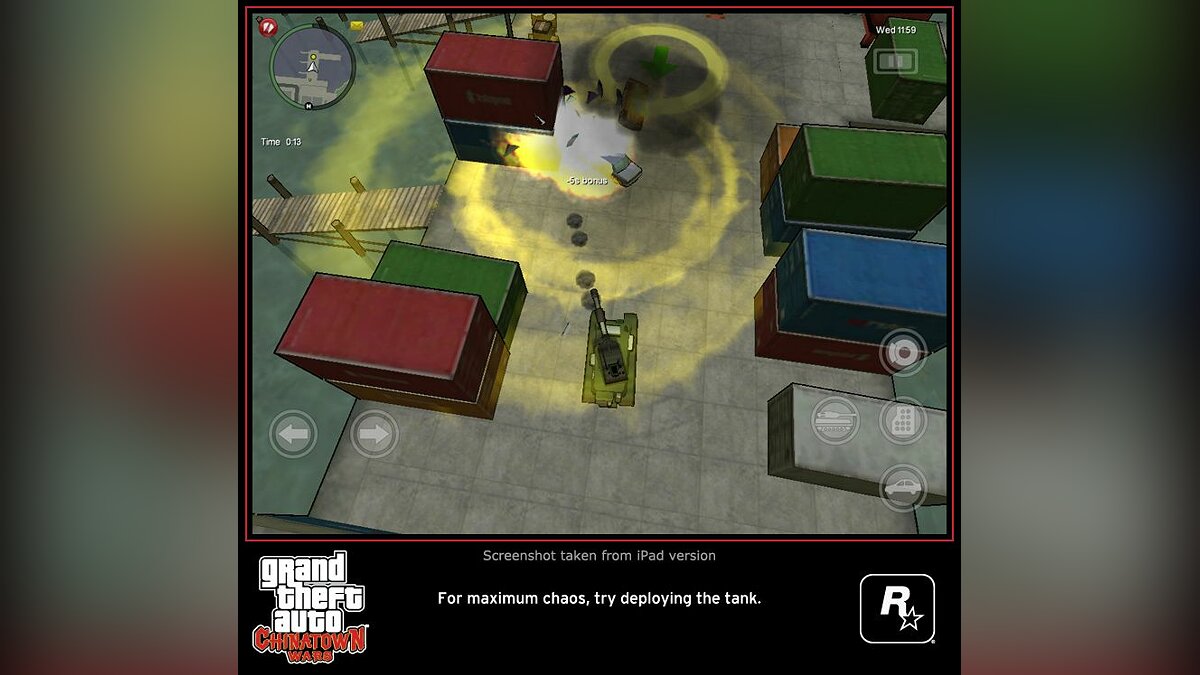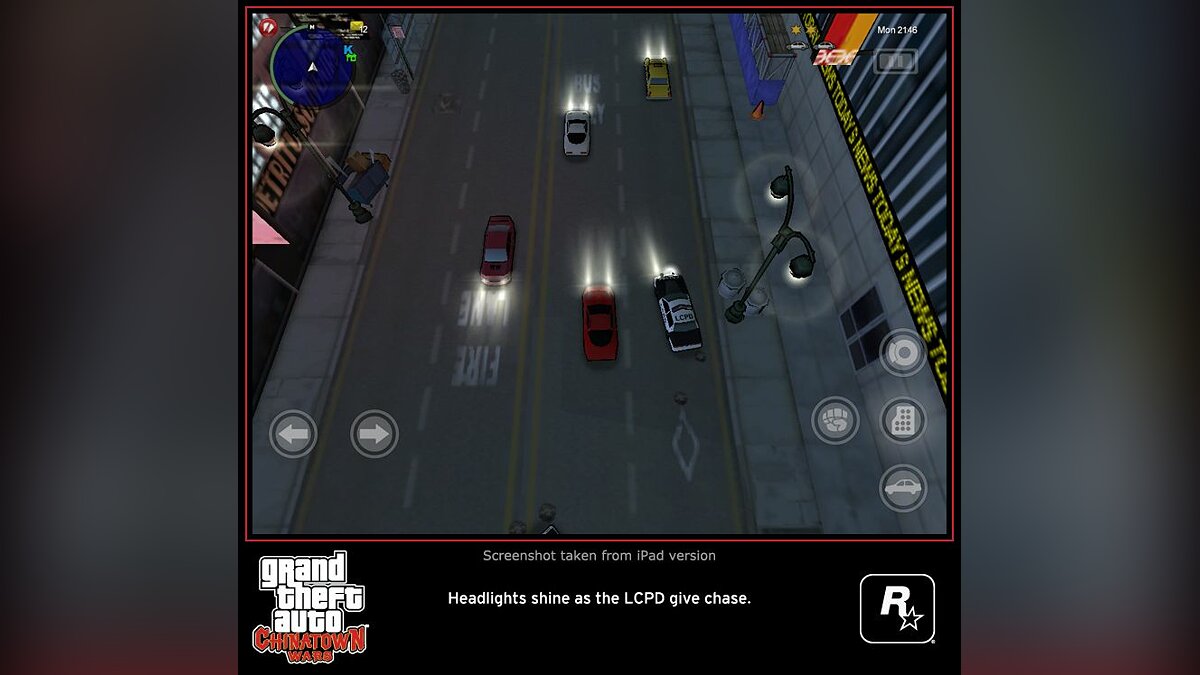GTA Chinatown Wars
This is not the first time that Grand Theft Auto games have come to handheld devices, thus covering the widest possible number of platforms. A separate part of the series, GTA Chinatown Wars was released in 2009 on the Nintendo DS, and later transferred to the PlayStation Portable, iPhone, iPod Touch and iPad. Two divisions of the world-famous company worked on the game at once — Rockstar North and Rockstar Leeds.
The location of the action was the city of Liberty City, which appears in the series of games most often: GTA 3, GTA: Advance, GTA: Liberty City Stories and GTA 4 took place here.
The layout of the city from the last named game was taken as the basis for the city in Chinatown Wars, but despite this, this game is very close to the very first parts of GTA. The game uses a 3D game engine, but the graphics are stylized as a "cartoon" image. On the Nintendo DS, unlike versions for other platforms, the cel-shading technique is also actively used (which brings the style even closer to the cartoon and creates a feeling of “pseudo-three-dimensionality”). The highest quality graphics go to the iPad version: there the game runs in high resolution 1024x768.
A special feature of GTA Chinatown Wars is that the virtual camera is located above the character, just like it was in the “classic” GTA. But unlike the first part, in Chinatown Wars the camera can be rotated, choosing a more convenient viewing angle.
The main character of GTA Chinatown Wars is Huang Li, a native of Hong Kong, the spoiled son of the father of the Chinese mafia. When Huang's father is killed, he goes to Liberty City to see Uncle Wu in order to give him a family heirloom — the ancient Yu-Jian sword. Juan believed that the trip to Liberty would be an extremely easy task for him, but after landing he is attacked: he is severely beaten, and then, after taking away his sword, he is left for dead. But Huang Li doesn't give up easily. The need to find the offenders, return the sword and restore the honor of his family appears on his list of priority tasks. Carrying out assignments for major figures in the criminal world, he gradually finds his father’s killers, whom he will not leave without fair retribution.
The gameplay is completely traditional for games in the series (freely moving around the city in different vehicles and completing tasks), but it also has a number of highlights. Stealing cars in GTA Chinatown Wars is not at all as easy as it might seem: in order to steal someone's car, you need to use one of several provided methods; for example, make several turns with a screwdriver in the ignition switch, or by breaking the ignition switch, manually connect the necessary wires. Other cars require more advanced methods of theft — you need to hack a computerized immobilizer (an electronic device that prevents theft).
GTA Chinatown Wars also has such an important feature as the ability to rummage through garbage cans: Huang Li (who somehow forgets about his honorable origin) after rummaging through the waste thoroughly can find weapons, drugs, food, or even money there. There are also mini-games here, for example, a lottery.
Juan receives assignments and important messages not on a mobile phone, or even on a pager, as in GTA 3, but via email. The developers even took into account the spam that comes along with the necessary messages.
The soundtrack of GTA Chinatown Wars is represented by instrumental compositions written by various DJs, but without the voices of presenters and advertising inserts that were in previous games in the series — this is not only an unusual move, but a forced decision due to the technical limitations of the Nintendo DS console, for which the game was originally developed . In the original version for NDS, the game has five radio stations, but in a later edition for PlayStation Portable and Apple devices, the authors added six more radio waves.
Release dates
- iPad — September 8, 2010
- iPhone — January 17, 2010
- Android — December 18, 2014
- Nintendo DS — March 17, 2009
- PSP — October 20, 2009













